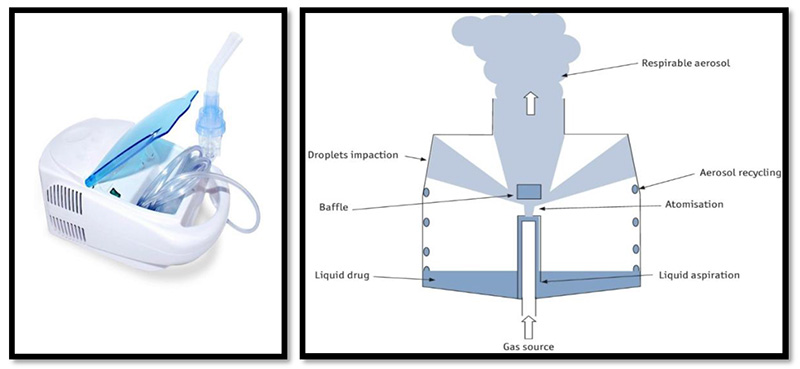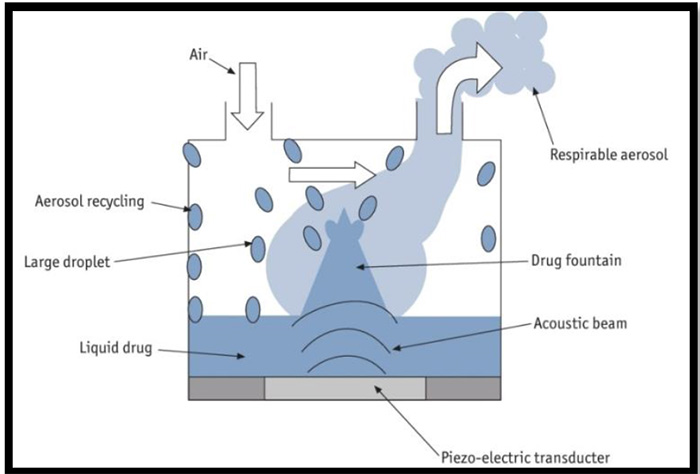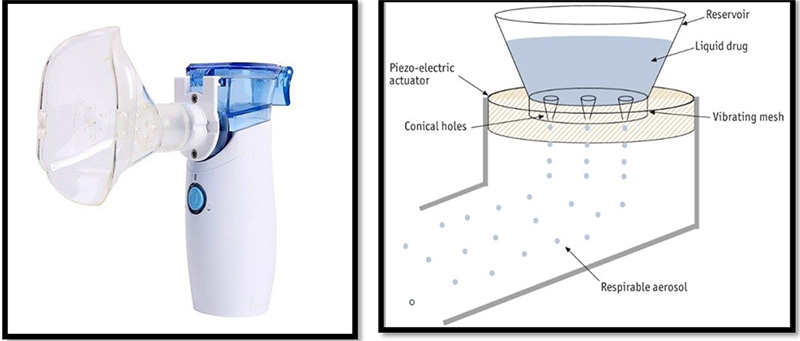
Finding 'Sanjivani', Daily! (Part-6)
Blog Space / Finding 'Sanjivani', Daily! (Part-6)

- The Motherhood Factor
- The “Higher" Connection
- Man proposes, God disposes
- From Pessimism To Optimism
- Finding 'Sanjivani', Daily! (Part-7)
- Finding 'Sanjivani', Daily! (Part-6)
- Finding 'Sanjivani', Daily! (Part-5)
- Finding 'Sanjivani', Daily! (Part-4)
- Finding 'Sanjivani', Daily! (Part-3)
- Interesting case of pneumonia
- Finding 'Sanjivani', Daily! (Part-2)
- On the moment of 100th Pulmonology Teleconsultation
- Finding 'Sanjivani', Daily
- Why so "Breathless"?
- A Blessing in Disguise
- The Art of Taking Consent
- The Oldman's Pursuit
No. This blog is not about any miracle drug or vaccine against SARS Co-V2 virus responsible for the current deadly pandemic of COVID19. This is regarding the class of medications already invented & used by millions of people across the globe daily - by force or by choice. They are inhaler medications or as commonly called "Pump".
A nebulizer is a device that can convert liquid into aerosol droplets (low velocity fine particles) which can be inhaled . It must be loaded with the medication before each treatment. Nebulization is one of the oldest method to inhale medications. The word ‘nebulizer' was included in oxford dictionary in 1872 as a ‘baffled spray-cloud producing device’.
The most important advantage nebulizers offer over other methods like pMDI or DPI (discussed earlier in detail) is, effort independent aerosol delivery which is a boon for the patients:
- In the emergency setting for the acute treatment
- In acute flare up/exacerbation of airway diseases like COPD, Asthma
- Like children or elderly who have coordination, cognitive or neuro-muscular problems
- Requiring high dose of inhaler medications
- Hospitalized patients undergoing surgeries, particularly in proximity to diaphragm and requiring aerosol therapy
- With tracheostomy requiring inhaler medications while being not on ventilator
- Requiring viscous medications like antibiotics to be aerosolized
- With oro-facial abnormalities
Modern day nebulizers can be divided in three major categories according to the principles of aerosol generation.
A) Jet Nebulizers:
Nebulizers of this type press air with a compressor (which varies according to manufacturer) or with oxygen (usually where central oxygen supply is available) through a pipe with a very narrow hole, known as a ‘Venturi’. At the Venturi the velocity of gas is very high and thus pressure falls. The negative lateral pressure causes the liquid to rise in the capillary tube according to the ‘Bernoulli’ effect. The high kinetic energy of the gas flow immediately breaks up the liquid into an aerosol. A baffle is used to exclude droplets which are too large for inhalation.

Jet nebulizers are currently used unanimously across hospital care settings. However, few important considerations to be emphasized while using them are:
- Jet nebulizers are bulky, noisy & require electricity supply – a critical factor restricting their portability
- The formulation becomes cold due to fall in temperature which may effect the size of aerosol generated
- Usual time required to deliver medication is at least 10 to 15 minutes. This becomes quite tedious when patient requires frequent medications
- Every device comes with pre-specified approximate ‘dead volume', meaning that the liquid solution is not used to generate aerosol. This volume is usually up to 1 to 1.5ml (out of 2.5ml respoule), which increases if inhaled for shorter period of time. Hence, it is sometimes advised to mix the drug formulation with addition of saline
- the device generates aerosol continuously irrespective of the patient’s respiratory phase, leading to loss of medication.
- The medication cup has to be hold in upright position. Because many times it is given to bed ridden patients, the cup remains tilted leading to reduction in aerosol generation and lung dose
- They demand maintenance : tubing, mask, medication cup, filter – all require proper cleaning and replacement at appropriate interval, failing to which, the risk of contamination and acquiring infection increases
To increase effectiveness, provision of one way valve in mouthpiece - ‘Breathe Enhanced Nebulizer (BEN)’ or delivery of medication only when it is inhaled – ‘Breathe Actuated Nebulizer (BAN)’ were evolved using same principle, but availability of both remains serious issue.
In order to provide portability by small size & battery power, to reduce the assembly (tubing, filter) and to prevent contamination by limiting use to a single patient, the technological advancement lead to the following:
B) Ultrasound Nebulizers:

This type of nebulizers use the vibration (1.2–2.4 MHz) of a piezo-electric crystal to generate the aerosol. Vibrations are transmitted to a liquid drug, generating a liquid-drug fountain comprising large and small droplets. Large droplets drop into the liquid-drug reservoir or are thrown onto the side of the nebulizer and recycled. Small droplets are stored in the nebulization chamber to be inhaled.
The advantage is that they are portable and silent, however they can be bulky. The standard type ultrasound nebulizer hit up the formulation effecting the aerosol generation. Also, like Jet nebulizer – significant ‘Dead Volume’ is an issue. In addition, they do not nebulize suspensions or liquids with high viscosity or a high surface tension. Availability, maintenance & cost are the factors inhibiting their wide spread use.
The most promising alternative of jet nebulizer – which provides portability by acceptable small size & battery back up, gives option of speedy aerosol generation leading to decrease in time of dose delivery, minimizing dead volume to minimum and also suitable for viscous solutions along with easy availability – is ‘Mesh Nebulizer'.
C) Mesh Nebulizers:

This type of nebulizers have annular piezo element which produce vibration around the mesh: made up of metal alloy and containing thousands of holes with conical shape and the liquid drug formulation is in direct contact with the mesh. The mesh deforms into the liquid side, thus pumping and loading the holes with liquid, ejecting droplets through the holes to be inhaled.
The drawback is that the small holes gets clogged over the period and hence it requires cleaning at regular intervals.
The most important factor while prescribing long term nebulizer therapy is cost, which increases exponentially compared with pMDI/DPI therapy. Ultimately, the choice of nebulizer therapy depends on agreement between patient & caregiver after thorough considerations of underlying disease status, inhalation effort as well as cost in long run.
To be continued….
Symbolism : A Pulmonologist passes through lot of thought processes to choose an inhaler just like Hanumanji's struggle to fetch the herb. An optimized inhaler therapy reduces the symptom (particularly of breathlessness) & risk of the disease - just as sanjivani cured army to conquer the evil.
Sanjivani : a miracle herb described in the ancient scripture of "Ramayana", was obtained by Hanumanji after unprecedented struggle. Very few people know that the herb was actually "inhaled" leading to restoration of the army lead by Lord Shri Ram to conquer the evil.
Part-6 of this blog series provides information on principles of nebulizer treatment, their types as well as differences among them.

Dr. Jaykumar Mehta
MBBS (Gold Medalist)
MD, DNB, MNAMS, PD Fellow (Pulmonology)
Consultant Interventional Pulmonologist (Zydus Hospital, Ahmedabad)


